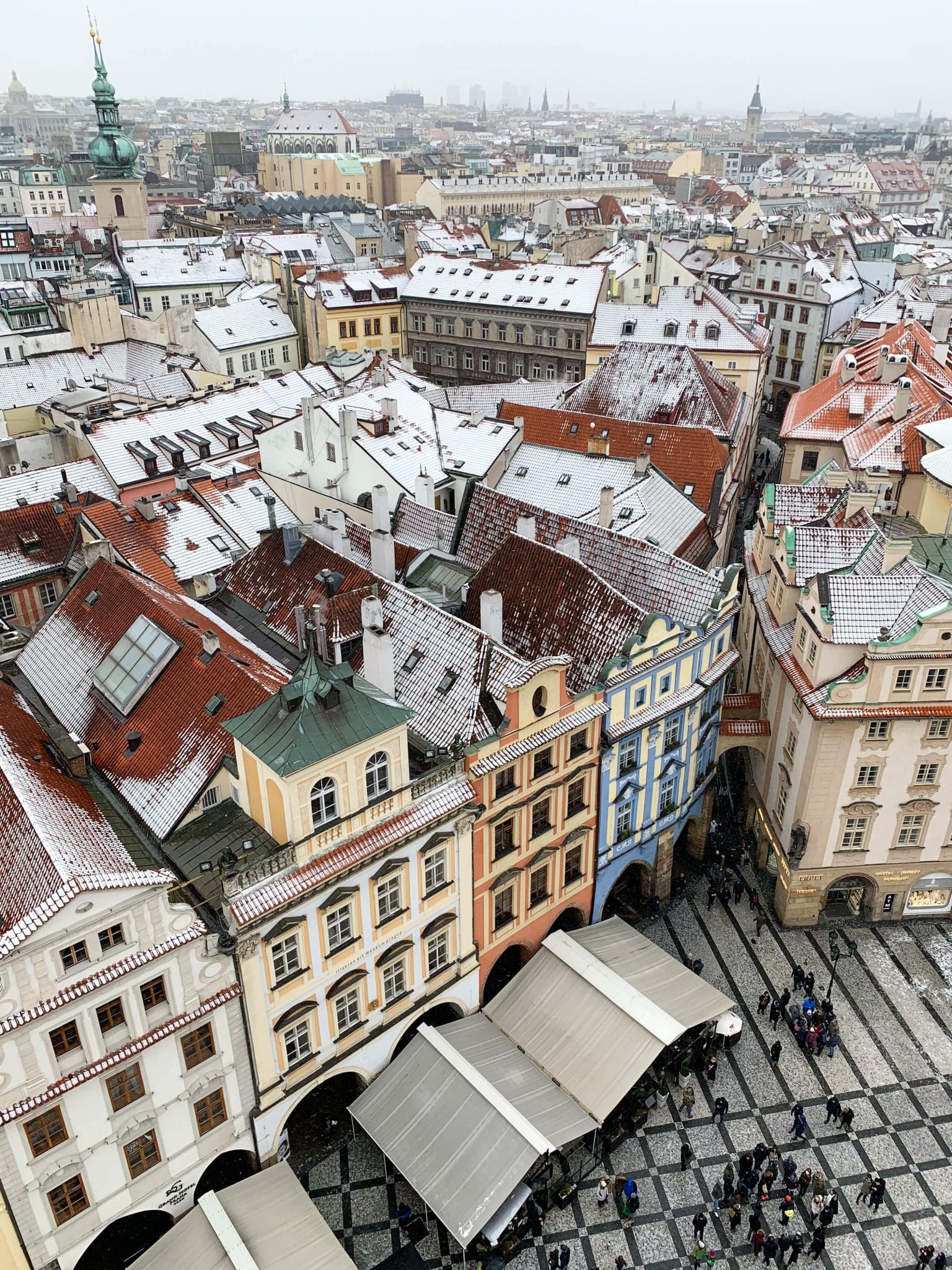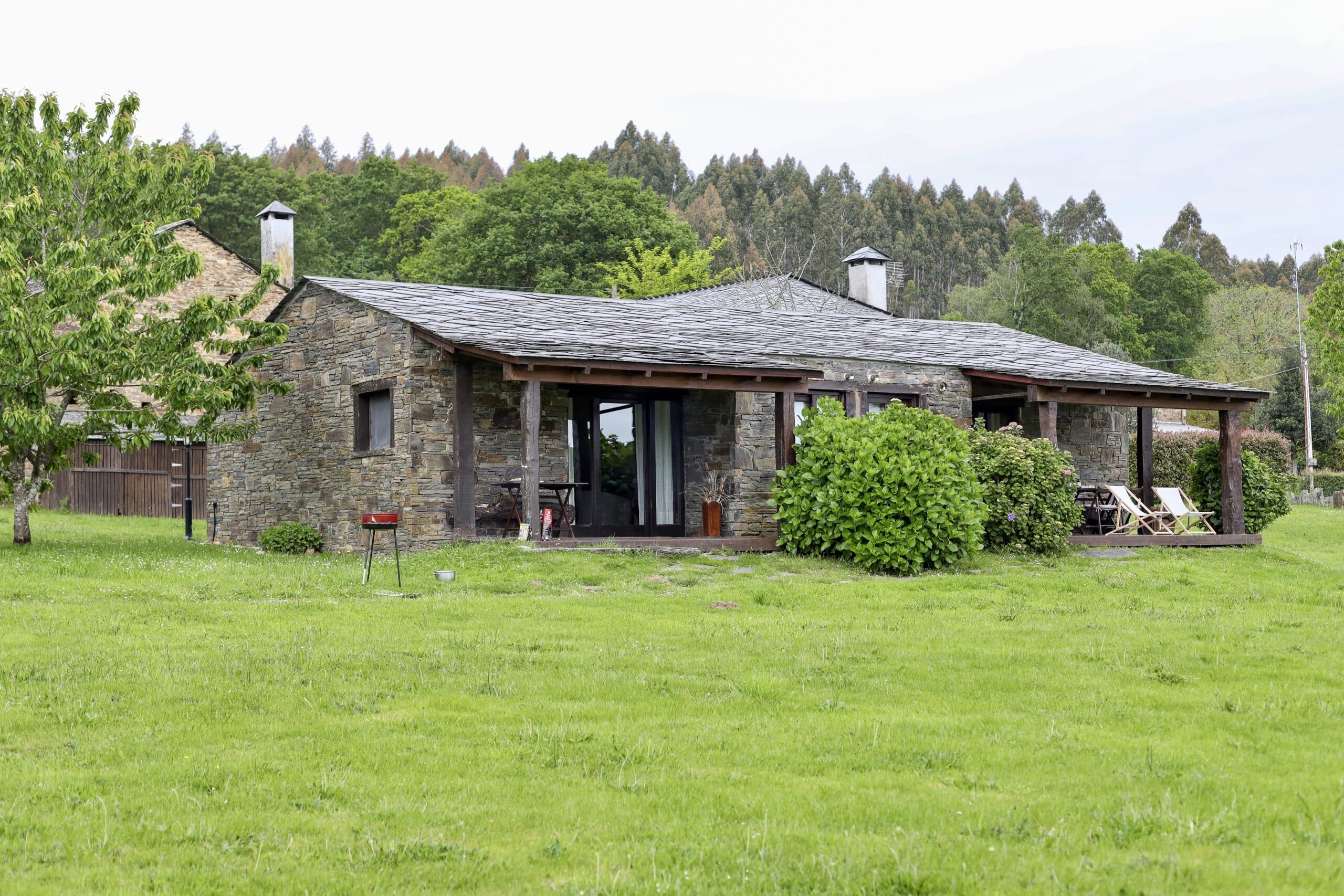I have just returned home from a little 4-day trip to Prague and of course, the least I could do was to write a post on my blog. Here are some ideas to move around the city, and enjoy views from up high, discover its monuments and its gastronomy, and find the perfect spots for unforgettable photos.
I hope you will find answers to all your doubts in this post and that you find it useful if you are planning a visit to the Czech capital.
Before anything else, I would like to start by saying that we chose January totally on purpose. Prague was already on my list of places I wanted to go and I’ve been wanting to visit for a long time. What I definitely knew was that I did not want to go during high season, because I really wanted to avoid crowds and bumping into tourists all the time.
When is the high season? Well, according to some Czech students I’ve had in the past and from what I could read online, tourist season can be quite long.
You should avoid Prague: around Saint Valentine, Easter, spring, summer, the beginning of autumn and Christmas (except if you want to visit Christmas markets, of course) and any other Spanish holiday.
Not many options left, as you can see. Everyone I talked to recommended going either after Christmas (in mid-January, because they also celebrate the Epiphany and even the Three Wise Kings parade) or in November. So, we decided to schedule our trip for late-January. You will still find lots of tourists, but it’s great that there are virtually no queues for anything and you won’t have to wait for more than a couple of minutes anywhere.
How to get there from the airport
The fastest and no doubt the most convenient way is to take bus 119. In just 15 minutes you’ll be at the Nádraží Veleslavín stop, which connects with the Metro. From there you can easily get to where you will be staying. It’s not complicated at all because Prague has just three Metro lines.
We were staying in a hotel in the center of the city and the whole trip, from the airport and including the Metro, took just 35 minutes. Total cost was just 32 Czech Crowns (less than 2€) and you can buy the ticket in the bus station, which by the way you can also use in the Metro.
Currency
Euros are accepted in most places, but my recommendation is that you exchange a small amount in case you want to use public transport (you will need coins for that). Credit cards are accepted in most other places.
Accommodation
Prague is divided into 8 main areas and my advice is that you find a place as close to the center as possible. Transport works really well, but neighborhoods and buildings are so impressive here that why miss on any of it? I suggest walking. You can also take the tram, which is pretty reliable. Number 22, for example, will take you to the area of the castle.
We chose a small boutique hotel called Design Jewel Hotel, in the Old Town and the room we stayed in had views of a beautiful street. Breakfast was quite good, with options of buffet and à la carte, with both Czech and international dishes.
We also liked the fact that they give you a Handy GPS when you want to go directly and accurately to a specific place, instead of walking around trying to find your own way.
Gastronomy
Czechs are known for enjoying meat dishes, whether it’s at home or in restaurants. In case you didn’t know, they are also the biggest beer drinkers in the world.
Click here to read about their food on this post, where I will also speak about my favorite places to eat and enjoy a drink in Prague.
Tips
When I read comments about cafes and restaurants about Prague, most people would complain about this. You must remember that it is customary to leave a 10% tip.
In the most expensive places they will not tell you, but in local pubs and taverns, they will inform you, when you ask for the bill, that the tip is not included and that it is 10%. It can be shocking at first because Czechs can generally seem dry or even rude, and they don’t usually make any special effort to earn that extra, like in other countries.
This can understandably be a little annoying to some, but it’s better to assume it beforehand and always leave at least a 10% tip.
Must-see places
Our first stop was the Astronomical Tower located in the gorgeous Old Town Square. To get to the top of the tower you can either walk up the ramp or take the lift (this is included in the ticket). Although this may seem like the typical touristy thing to do, believe me, it’s totally worth it because you will enjoy the best views of the city from there. We were lucky because it snowed the previous night and the whole city was covered with snow, which was great for photos.
Every hour on the hour, you can see an allegorical procession of the 12 apostles behind two windows above the clock while a skeleton pulls a chord to toll a bell. Astronomical Clock Prague video here.
Another very recognizable image of Prague is the famous Charles Bridge over Vltava river. Carriages used to cross it many years ago, but today it’s an exclusively pedestrian bridge. If you want a cool photo showing the whole bridge, the river, and swans, go up Chihelna street, on the northwestern bank.
Another must is the area around the Prague Castle, the largest ancient castle in the world, built in the 9th century. Don’t expect a typical castle. Rather, the complex includes more than 60 buildings, among them a palace, a cathedral, a basilica, and several museums. All of them connected by a network of quaint streets, including one called the Golden Lane. Apart from goldsmiths and soldiers, Kafka’s sister lived on this street and Kafka himself wrote one of his books here. Another former neighbour was Madame de Thebes, a local fortuneteller who predicted the fall of the Nazi regime and died at the hands of the Gestapo in World War II.
The Jewish Quarter or Josefov is another important destination. Six synagogues remain and the extraordinary and unique Old Jewish Cemetery. There is a single ticket to visit everything and I strongly suggest you do that.
Pinkas is one of the most important synagogues of the city. Its walls are covered with names of about 78,000 Czech Jewish victims of the Holocaust. Half of them died at the Terezin concentration camp, 60 kilometers north of Prague. There are excursions from the center of Prague or you can plan your own visit. You can take a bus from the Nádraží Holešovice station. Terezin was a transition camp that held thousands of Jews from Czechoslovakia as well as from other places, like Minsk and the Baltic republics.
Other places that we visited and that I highly recommend are the park and fortress of Vyšehrad, the Nové Město (New Town) with the Wenceslao Square and Dancing House, by Croatian-Czech architect Vlado Milunić and Canadian-American architect Frank Gehry.
I hope this trip to Prague can be useful for you when organizing your own visit!
Photos: Carlota Fariña
For this post, I shot all the photos on Iphone XS
















